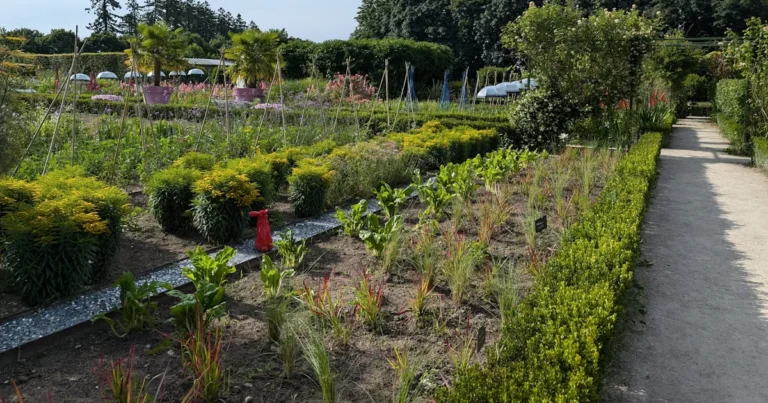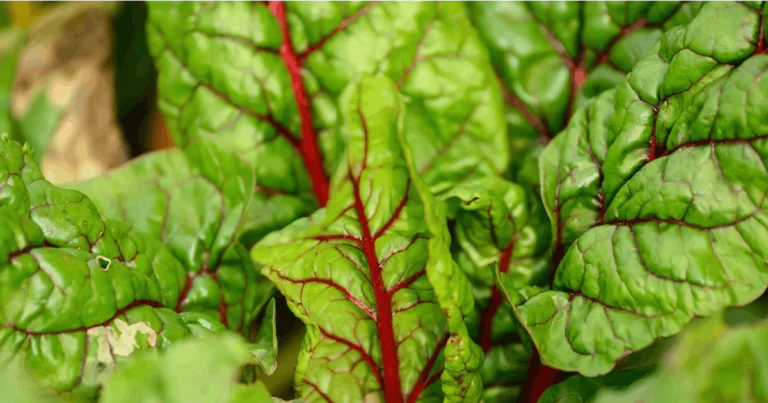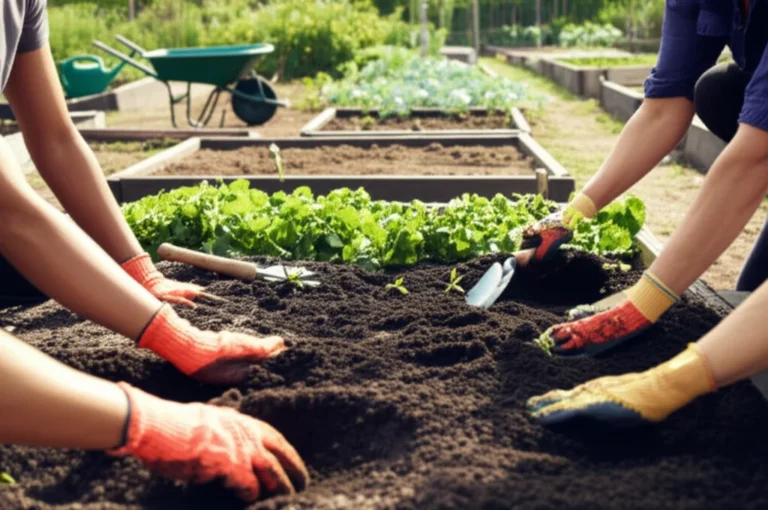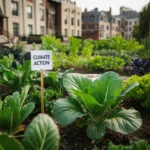Support our educational content for free when you purchase through links on our site. Learn more
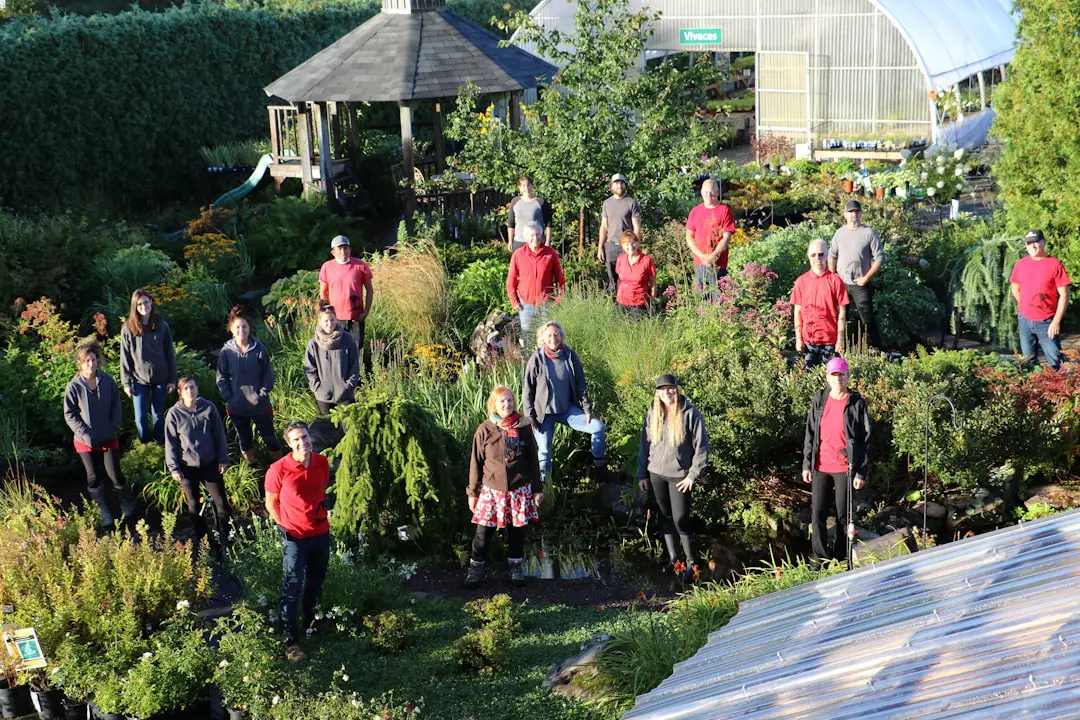
Imagine turning a forgotten patch of urban land into a vibrant oasis bursting with fresh veggies, buzzing pollinators, and neighbors sharing stories over ripe tomatoes. That’s the magic of a successful community garden—a place where soil meets soul, and growth happens both above and below ground. But how do you transform that dream into reality? From choosing the perfect sunny spot to rallying your green team and mastering organic pest control, this comprehensive guide uncovers 12 essential steps and insider tips to cultivate a thriving garden that nourishes your community year-round.
Did you know that community gardeners increase their fruit and veggie intake by over 1.4 servings daily? 🌱 Plus, these gardens boost mental health, reduce crime, and build social bonds stronger than the roots of an ancient oak. Ready to dig in? Let’s explore how to grow together through community gardening and unlock the secrets to your neighborhood’s green success.
Key Takeaways
- Clear vision and community engagement are the foundation of a thriving garden.
- Site selection matters: look for sunlight, water access, and safe, accessible land.
- Strong leadership and governance keep the garden organized and conflict-free.
- Organic practices and composting promote healthy soil and sustainable growth.
- Creative funding and partnerships ensure long-term garden vitality.
- Year-round planning with crop rotation and succession planting maximizes harvests.
- Community events and shared tools foster connection and stewardship.
Ready to equip your garden crew? Check out these top-rated tools for gardeners:
- Fiskars Garden Tools: Amazon | Walmart | Fiskars Official Website
- Corona Garden Tools: Amazon | Walmart | Corona Official Website
Dive into the full guide and start planting the seeds for a greener, more connected tomorrow!
Table of Contents
- ⚡️ Quick Tips and Facts
- 🌱 The Roots of Growth: A Brief History of Community Gardening’s Flourishing Comeback
- ❓ What’s Sprouting? Unearthing the Magic of a Community Garden
- 💚 Why Plant the Seeds? The Bountiful Benefits of Cultivating a Community Garden
- 🗺️ Your Greenprint for Success: 12 Essential Steps to Cultivating a Thriving Community Garden
- 💡 Dream Big, Start Small: Vision & Planning for Your Garden Oasis
- 📍 Location, Location, Location: Site Selection & Assessment for Optimal Growth
- 🤝 Gather Your Green Team: Building a Core Committee & Cultivating Leadership
- 💰 Digging for Dollars: Funding, Grants & Creative Fundraising Strategies
- ⚖️ Laying the Groundwork: Legalities, Permits & Insurance for Peace of Mind
- 📐 Designing Your Oasis: Thoughtful Layout, Plot Allocation & Accessibility
- 📜 Crafting the Rules: Governance, Bylaws & Membership Agreements for Harmony
- 🚜 Breaking Ground: Soil Preparation, Infrastructure & Essential Tools
- 🥕 Planting for Plenty: Crop Selection, Companion Planting & Sustainable Practices
- 💧 Watering Wisdom: Efficient Irrigation & Water Conservation Techniques
- 🐞 Pest Patrol & Disease Defense: Organic Solutions for a Healthy Harvest
- 🎉 Harvesting Harmony: Community Engagement, Events & Conflict Resolution
- 📈 Beyond the Basics: Advanced Strategies for Sustained Growth & Longevity
- ♻️ Compost Crusaders: Building Healthy Soil from the Ground Up
- 🛠️ Tool Time: Essential Equipment & Shared Resources for Your Community Plot
- 🗓️ Seasonal Sensations: Year-Round Garden Care, Crop Rotation & Succession Planting
- 🍎 The Art of Sharing: Managing Harvests, Donations & Food Security Initiatives
- 🚧 Weeding Out Worries: Common Challenges & Savvy Solutions for Community Gardens
- 📊 Measuring Your Green Thumbprint: Defining & Celebrating Success in Your Garden
- 🫂 Cultivating Connections: The Social Fabric & Mental Wellness Benefits of a Community Garden
- 📚 Resources for Your Roots: Tools, Organizations & Learning Opportunities
- ✨ Conclusion: Sowing Seeds for a Greener, More Connected Tomorrow
- 🔗 Recommended Links: Further Reading for the Avid Community Gardener
- ❓ FAQ: Your Community Garden Questions Answered!
- 📖 Reference Links: Our Sources for Growing Knowledge
⚡️ Quick Tips and Facts
Welcome to the green revolution! Before we dive deep into the dirt, here are some quick nuggets from the Community Gardening™ pros to get you started on your journey to a successful community garden:
- Community gardens boost fresh produce intake by over 1.4 servings per day for participating households (UMN Study). 🍅🥦
- Choose land near water sources with good sunlight — it’s the secret sauce for thriving plants.
- Start small but dream big: a few plots can grow into a neighborhood oasis.
- Engage your community early — crowdfunding and local events build momentum and ownership.
- Organic gardening methods protect your soil and your neighbors.
- Composting is king for soil health and waste reduction. ♻️
- Plan for year-round care with crop rotation and succession planting.
- Expect challenges like pest control and volunteer burnout — but we’ve got solutions!
- Celebrate your harvest with community meals and donations to food pantries.
- Community gardens improve mental health, reduce crime, and build social capital (PMC Study).
Want to dig deeper? Check out our detailed guide below — we promise it’s more fun than pulling weeds! 🌿
🌱 The Roots of Growth: A Brief History of Community Gardening’s Flourishing Comeback
Community gardens aren’t just a modern trend — they’re a time-tested tradition rooted in resilience and community spirit. From Victory Gardens in WWII to urban renewal projects today, these shared green spaces have blossomed as hubs of nourishment, education, and social connection.
The Comeback Story
- Post-industrial urban decay left many neighborhoods barren, but community gardens sprouted as grassroots solutions.
- The 1970s saw a surge in urban gardening, fueled by environmental awareness and food justice movements.
- Today, community gardens are multifaceted assets: improving air quality, reducing food deserts, and fostering biodiversity (ioby.org).
Why It Matters
- Gardens are more than plants—they’re living classrooms and social hubs.
- They empower communities to reclaim vacant lots and transform them into thriving ecosystems.
- The history of community gardening is a testament to the power of collective action and green thumbs.
For more inspiration, explore our Garden Design Ideas to see how history meets innovation.
❓ What’s Sprouting? Unearthing the Magic of a Community Garden
So, what exactly is a community garden? At its heart, it’s a shared green space where neighbors grow fruits, veggies, flowers, and friendships. But it’s so much more than dirt and seeds!
Defining Features
- Shared ownership and responsibility: Everyone contributes and benefits.
- Diverse crops tailored to community needs and local climate.
- Educational opportunities: Workshops, youth programs, and cultural exchanges.
- Environmental benefits: Improved soil health, stormwater management, and habitat creation.
Types of Community Gardens
| Type | Description | Benefits |
|---|---|---|
| Allotment Gardens | Individual plots rented or assigned to gardeners | Personal responsibility, variety |
| Collective Gardens | Shared work and harvest among members | Strong community bonds |
| School Gardens | Educational gardens for students | Learning and nutrition |
| Therapeutic Gardens | Designed for healing and mental wellness | Stress reduction and therapy |
| Indoor/Vertical Gardens | Space-saving gardens for urban or year-round growth | Accessibility and innovation |
Community gardens are the green heartbeats of neighborhoods, knitting people and nature together. Curious how to start one? Keep reading!
💚 Why Plant the Seeds? The Bountiful Benefits of Cultivating a Community Garden
Community Gardening™ has seen firsthand how these gardens transform lives. Here’s why planting a community garden is a win-win for everyone involved:
Nutritional & Health Benefits
- Increased fruit and vegetable consumption by participants (UMN Study).
- Physical activity boost through gardening tasks.
- Mental health uplift: gardening reduces stress, anxiety, and depression (PMC Study).
Environmental Impact
- Improved air and soil quality through organic practices.
- Enhanced biodiversity: attracting pollinators and beneficial insects.
- Reduced food miles: fresher food with a smaller carbon footprint.
Social & Economic Perks
- Community cohesion: gardens act as social glue, reducing crime and fostering inclusion.
- Educational opportunities for all ages.
- Food security: fresh produce for underserved populations.
- Economic savings: growing your own food cuts grocery bills.
Want to see these benefits in action? Check out our Benefits of Community Gardens for real stories and stats.
🗺️ Your Greenprint for Success: 12 Essential Steps to Cultivating a Thriving Community Garden
Ready to roll up your sleeves? Here’s our step-by-step blueprint to turn that patch of earth into a flourishing community garden. Each step is packed with tips, tricks, and insider knowledge from Community Gardening™ experts.
1. 💡 Dream Big, Start Small: Vision & Planning for Your Garden Oasis
- Define your garden’s purpose: food production, education, therapy, or all of the above.
- Set clear goals with your community — what do you want to achieve?
- Create a mission statement to guide decisions and inspire participants.
- Map out resources: volunteers, funding, tools, and expertise.
- Host visioning sessions to gather ideas and build excitement.
Pro tip: Use tools like MindMeister for collaborative brainstorming!
2. 📍 Location, Location, Location: Site Selection & Assessment for Optimal Growth
- Look for land with ample sunlight (6+ hours/day) and access to water.
- Check soil quality: test for pH, contaminants, and nutrients.
- Secure permissions from landowners and verify zoning laws.
- Consider accessibility for all community members, including those with disabilities.
- Evaluate safety and security: fencing, lighting, and neighborhood support.
We recommend partnering with local governments or nonprofits for land access. Learn more about site selection in our Garden Design Ideas section.
3. 🤝 Gather Your Green Team: Building a Core Committee & Cultivating Leadership
- Recruit passionate volunteers with diverse skills: gardening, fundraising, outreach.
- Form committees for tasks like maintenance, events, and education.
- Designate leadership roles to keep momentum and accountability.
- Encourage inclusivity to reflect your community’s diversity.
- Provide training and mentorship to empower new leaders.
Remember, a garden thrives on teamwork — it’s like a symphony of green thumbs! 🎶
4. 💰 Digging for Dollars: Funding, Grants & Creative Fundraising Strategies
- Estimate startup and ongoing costs: soil amendments, tools, water, insurance.
- Explore grants from organizations like the American Community Gardening Association.
- Crowdfund via platforms like ioby — community buy-in is a bonus!
- Host fundraising events: plant sales, workshops, garden tours.
- Seek local business sponsorships for materials or financial support.
Our experience shows that diversifying funding sources is key to sustainability.
5. ⚖️ Laying the Groundwork: Legalities, Permits & Insurance for Peace of Mind
- Obtain necessary permits: land use, water access, and structures.
- Draft liability waivers to protect organizers and participants.
- Consider insurance: general liability or volunteer accident coverage.
- Establish clear governance documents: bylaws, membership agreements.
- Consult local authorities and legal experts to avoid surprises.
Legal groundwork might seem tedious, but it’s the bedrock of a thriving garden.
6. 📐 Designing Your Oasis: Thoughtful Layout, Plot Allocation & Accessibility
- Plan plot sizes (typically 100-500 sq ft) based on gardener needs.
- Incorporate communal spaces: tool sheds, compost bins, seating areas.
- Design pathways for wheelchair and stroller access.
- Consider sun/shade patterns for optimal plant placement.
- Include rainwater harvesting or irrigation systems.
Check out our Garden Design Ideas for inspiration and layouts.
7. 📜 Crafting the Rules: Governance, Bylaws & Membership Agreements for Harmony
- Create clear, written rules on plot use, maintenance, and conflict resolution.
- Set watering and weeding schedules to keep the garden tidy.
- Adopt organic gardening policies to protect health and environment.
- Outline membership fees and responsibilities.
- Establish procedures for disputes and plot reassignment.
Strong governance keeps the garden growing smoothly and friendships flourishing.
Explore more on Community Garden Policies.
8. 🚜 Breaking Ground: Soil Preparation, Infrastructure & Essential Tools
- Test and amend soil with compost, manure, or organic fertilizers.
- Build raised beds if soil quality is poor or for accessibility.
- Install fencing to deter pests and protect plants.
- Gather essential tools: shovels, rakes, hoes, watering cans.
- Set up compost bins to recycle garden waste.
Our favorite tool brands include Fiskars and Corona for durability and comfort.
👉 Shop Fiskars Tools on: Amazon | Walmart | Fiskars Official Website
9. 🥕 Planting for Plenty: Crop Selection, Companion Planting & Sustainable Practices
- Choose crops suited to your climate and soil (see our Edible Plants guide).
- Practice companion planting to boost growth and deter pests (e.g., tomatoes with basil).
- Rotate crops annually to maintain soil health.
- Use heirloom and native varieties to preserve biodiversity.
- Incorporate pollinator-friendly flowers to attract beneficial insects.
Planting smart means harvesting big — and sharing the bounty!
10. 💧 Watering Wisdom: Efficient Irrigation & Water Conservation Techniques
- Install drip irrigation or soaker hoses to minimize water waste.
- Collect rainwater with barrels for sustainable watering.
- Mulch beds to retain moisture and suppress weeds.
- Water early in the morning or late afternoon to reduce evaporation.
- Educate gardeners on water-saving habits.
Water is life — treat it like gold! 🌊
11. 🐞 Pest Patrol & Disease Defense: Organic Solutions for a Healthy Harvest
- Encourage beneficial insects like ladybugs and lacewings.
- Use natural repellents: neem oil, garlic spray, or insecticidal soap.
- Practice crop rotation and sanitation to prevent disease buildup.
- Handpick pests and remove affected plants promptly.
- Avoid chemical pesticides to protect pollinators and soil life.
Organic pest control keeps your garden—and conscience—clean.
12. 🎉 Harvesting Harmony: Community Engagement, Events & Conflict Resolution
- Host regular events: potlucks, workdays, workshops, and harvest festivals.
- Celebrate milestones to build camaraderie.
- Create communication channels: newsletters, social media, bulletin boards.
- Address conflicts promptly and fairly with mediation.
- Share excess harvest with food banks or neighbors in need.
A garden is a community’s heartbeat — keep it lively and inclusive! For event ideas, visit our Community Garden Events.
📈 Beyond the Basics: Advanced Strategies for Sustained Growth & Longevity
Once your garden is growing strong, it’s time to level up with these advanced tips to keep your oasis thriving season after season.
♻️ Compost Crusaders: Building Healthy Soil from the Ground Up
- Set up multi-bin compost systems for efficient breakdown.
- Educate gardeners on compostable materials and avoid contaminants.
- Use compost teas to boost soil microbiology.
- Incorporate vermicomposting (worm composting) for nutrient-rich castings.
Healthy soil = happy plants. It’s the foundation of sustainable gardening.
🛠️ Tool Time: Essential Equipment & Shared Resources for Your Community Plot
- Maintain a shared tool shed with inventory and check-out system.
- Invest in ergonomic tools to reduce strain.
- Consider bulk purchases for cost savings.
- Host tool maintenance workshops to prolong lifespan.
Sharing tools builds trust and saves money.
🗓️ Seasonal Sensations: Year-Round Garden Care, Crop Rotation & Succession Planting
- Plan crop rotations to prevent nutrient depletion.
- Use succession planting to maximize harvests.
- Incorporate cover crops in off-seasons to enrich soil.
- Protect plants with cold frames or row covers for extended growing seasons.
Keep your garden buzzing 365 days a year!
🍎 The Art of Sharing: Managing Harvests, Donations & Food Security Initiatives
- Organize harvest days with clear guidelines.
- Partner with local food banks to donate surplus produce.
- Create community fridges or sharing tables for equitable distribution.
- Track donations and impact to attract funding and support.
Giving back roots your garden deeply in community care.
🚧 Weeding Out Worries: Common Challenges & Savvy Solutions for Community Gardens
Every garden has its thorns. Here’s how to tackle the most common hurdles:
| Challenge | Solution |
|---|---|
| Volunteer burnout | Rotate tasks, celebrate wins, and keep communication open. |
| Pest infestations | Use integrated pest management and encourage beneficials. |
| Vandalism or theft | Install fencing, lighting, and community watch programs. |
| Funding shortages | Diversify income streams and apply for grants regularly. |
| Soil contamination | Use raised beds and test soil before planting. |
| Conflicts among gardeners | Establish clear rules and mediate early. |
We’ve seen gardens bounce back stronger after every challenge — resilience is part of the magic! ✨
📊 Measuring Your Green Thumbprint: Defining & Celebrating Success in Your Garden
Success isn’t just about how many zucchinis you grow. Here’s how to measure your garden’s impact:
- Quantitative metrics: number of plots, pounds of produce harvested, volunteer hours.
- Health outcomes: increased fruit and vegetable intake, physical activity levels.
- Social indicators: community participation, event attendance, conflict resolution.
- Environmental benefits: soil health improvements, biodiversity counts.
- Stories and testimonials: personal transformations and community bonds.
Celebrate your wins with annual reports, newsletters, and garden parties! 🎉
🫂 Cultivating Connections: The Social Fabric & Mental Wellness Benefits of a Community Garden
Community gardens are more than food sources — they’re mental health sanctuaries and social glue.
- Gardening reduces stress hormones and boosts mood-enhancing endorphins.
- Shared work fosters friendships and cross-cultural understanding.
- Gardens provide safe spaces for youth engagement and elder inclusion.
- They reduce crime by increasing neighborhood pride and surveillance.
- Programs like Pittsburgh’s Art in the Garden blend creativity and healing (ioby.org).
Our gardeners often tell us, “It’s not just the plants that grow here — it’s the people.” 💚
📚 Resources for Your Roots: Tools, Organizations & Learning Opportunities
Ready to grow your knowledge? Here’s a curated list of top resources:
| Resource | Description | Link |
|---|---|---|
| American Community Gardening Assoc. | National nonprofit supporting community gardens | communitygarden.org |
| ioby | Crowdfunding platform for community projects | ioby.org |
| University of Minnesota Horticulture | Degree programs and continuing education | ccaps.umn.edu |
| Active Living by Design | Resources for healthy community design | activelivingbydesign.org |
| The Land Grid | Property data and mapping tools for site selection | thelandgrid.org |
For hands-on learning, check out our workshops and webinars at Community Gardening™.
✨ Conclusion: Sowing Seeds for a Greener, More Connected Tomorrow
Well, we’ve journeyed from the first seed of an idea all the way to harvesting a thriving community garden oasis! 🌿 Whether you’re dreaming of fresh tomatoes, vibrant friendships, or a neighborhood transformed, successful community gardening is a blend of vision, collaboration, and care.
From securing the perfect sunny spot to navigating legal hoops, from rallying your green team to mastering organic pest control, every step is a vital stitch in the fabric of your garden’s story. And remember, challenges like volunteer burnout or funding hiccups? They’re just weeds to be pulled out with patience and creativity.
Our Community Gardening™ team has seen firsthand how these gardens blossom into more than just food sources—they become mental health sanctuaries, educational hubs, and engines of social change. So, if you’re ready to dig in, know this: your efforts will ripple far beyond the soil.
Keep your eyes on the prize—fresh air, fresh food, and fresh connections—and your garden will flourish season after season. 🌻
🔗 Recommended Links: Further Reading for the Avid Community Gardener
Ready to gear up and grow? Here are some top picks for tools, books, and resources to help your community garden thrive:
-
Fiskars Garden Tools:
Amazon | Walmart | Fiskars Official Website -
Corona Garden Tools:
Amazon | Walmart | Corona Official Website -
Books on Community Gardening & Sustainable Practices:
-
Crowdfunding for Community Gardens:
ioby — A fantastic platform to raise funds and build community support. -
Educational Programs:
University of Minnesota’s Master of Professional Studies in Horticulture for those wanting to deepen their expertise.
❓ FAQ: Your Community Garden Questions Answered!
What are the key elements of a successful community garden?
A successful community garden thrives on clear vision, strong community engagement, and solid planning. Key elements include:
- Accessible and well-chosen land with good sunlight and water access.
- Inclusive leadership and governance with clear rules and roles.
- Sustainable funding through grants, donations, and fundraising.
- Organic gardening practices to protect health and environment.
- Ongoing education and skill-building for gardeners.
- Community events and communication to foster belonging and resolve conflicts.
These elements create a resilient garden that nourishes both plants and people.
How can I get involved in a community garden in my area?
Getting involved is easier than you think! Here’s how:
- Search local resources: Check community centers, municipal websites, or platforms like American Community Gardening Association.
- Visit existing gardens: Volunteer for workdays or events to meet members and learn the ropes.
- Join online groups or social media pages dedicated to local gardening.
- Start your own garden if none exist—use our step-by-step guide above!
- Attend workshops and classes offered by local nonprofits or extension services.
Getting your hands dirty is the best way to grow your involvement!
What are the benefits of participating in a community garden for mental and physical health?
Community gardens are natural wellness boosters:
- Physical activity: Gardening tasks increase exercise, improving cardiovascular health and strength.
- Mental health: Exposure to nature reduces stress, anxiety, and depression by releasing serotonin and lowering cortisol.
- Social connection: Shared gardening fosters friendships and combats loneliness.
- Sense of purpose: Caring for plants and contributing to community builds self-esteem and fulfillment.
- Educational engagement: Learning new skills keeps the mind sharp and engaged.
Studies, including those by the Public Health Institute, confirm these benefits, making community gardens vital for holistic health.
How can community gardens be used to build stronger, more cohesive neighborhoods and foster a sense of community?
Community gardens act as social catalysts by:
- Creating shared spaces where diverse groups meet and collaborate.
- Encouraging cultural exchange through shared crops and traditions.
- Reducing crime by increasing neighborhood pride and “eyes on the garden.”
- Hosting events that bring neighbors together for celebrations and education.
- Empowering residents to take ownership of local green spaces and food security.
These gardens weave a social fabric that strengthens neighborhoods and builds lasting bonds.
How do community gardens contribute to environmental sustainability?
Community gardens are environmental superheroes:
- Reducing food miles by growing food locally, cutting greenhouse gas emissions.
- Enhancing biodiversity by providing habitats for pollinators and beneficial insects.
- Improving soil health through organic amendments and composting.
- Managing stormwater by increasing permeable surfaces and reducing runoff.
- Reducing waste via composting and recycling garden materials.
They’re a grassroots solution to global environmental challenges.
📖 Reference Links: Our Sources for Growing Knowledge
- University of Minnesota: 7 Effective Steps to Start a Community Garden
- ioby: Get Inspired with These 3 Successful Community Gardens
- National Institutes of Health: Community Gardens: Lessons Learned From California Healthy Cities and Communities
- American Community Gardening Association: communitygarden.org
- Fiskars Official Website: fiskars.com/gardening
- Corona Tools Official Website: coronatools.com
- Active Living by Design: activelivingbydesign.org
- The Land Grid: thelandgrid.org
Ready to grow your community garden dreams into reality? 🌻 Let’s get planting!

